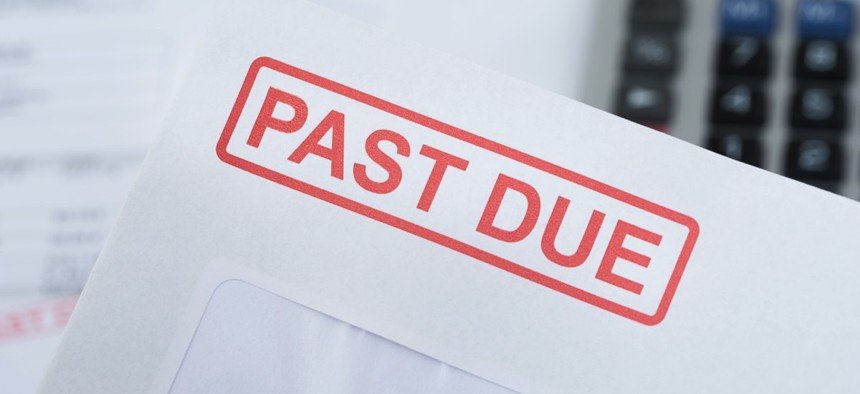9 Common Practices for Successful Government Revenue Management

How many of these techniques are you using to collect debts?
Tighter budgets, increased costs, self-funding laws and the overall technical complexity of the market have caused a challenging environment for government revenue management professionals. How do the most successful government offices maintain compliance, raise reimbursement and reduce time to collect? Those with the highest collection percentage follow some common practices that should be implemented by all government collection departments.
1. Become self-funded.
Highly successful government collection departments are self-funded. The most successful charge a collection fee, which is typically a percentage of what they collect. Ideally, that amount is added to the debt and paid by the debtor. This can help alleviate a burden to the budget and allows them to survive during budget downturns, thus adding the ability to add headcount, tools and to adopt new technologies much faster.
2. Establish a centralized collection department.
Centralization provides an arena to build specialization and expertise. When working a debt, all debts owed can be handled at one time. There are tremendous cost savings in correspondence, skip tracing and outsourcing. In a survey done by the National Association of State Auditors, Comptrollers and Treasurers (NASACT) and CGI, respondents reported that the highest level of collections effectiveness come from those who centralize their program.
A well-trained staff of representatives motivated by performance incentives can make a huge difference to your bottom line.
3. Automate your collection process.
Automating your collection process allows sometimes scarce personnel to focus only on those tasks that require human attention. Automation also provides a method for ensuring all debts receive attention and optimum routing for highest likelihood of collection.
4. Score accounts to determine collectibility.
Accounts are most collectible when they are new. Scoring accounts to determine ability to contact, propensity to pay and ability to pay provides the correct focus on the accounts that yield the highest returns. All accounts need attention, but focusing on new high-scoring accounts will bring in more revenue and allow for lower scoring accounts to be routed on a lower-cost collection path.
5. Make it easy to pay.
The easiest thing a debtor should be able to do is pay their bill. It is critical to provide debtor payment options that are easy, comfortable and convenient to them—a payment window, a kiosk, payments by phone, credit or debit card, or other options. Perhaps the most important option today is a website payment portal. This not only allows you to accept payments 24/7, but payment portals also provide convenient ways to capture updated address and phone numbers, get consent for contact via cell or email and allow payment plan negotiations.
6. Use all government resources, including tax intercept, DMV, and employment info.
Government departments often have collection tools available to them that private collection agencies don’t. Intercepting tax refunds is the most successful collection tool that most governments use. The ability to block tag renewals or driver’s license renewals is very effective for many governments, and using employment information that many governments have is very useful in determining ability to pay. Governments also often have other databases where updated contact information can be obtained.
Several years ago, the California Franchise Tax Board worked with the Federal Treasury Offset Program (FTOP) to incorporate a debt collection program, where they intercepted federal refunds for payment of past-due California income tax debts. A limited study concluded that after less than three years into implementation, the program helped them collect more than $22 million dollars.
7. Make correspondence clear and demanding.
The most successful government collection departments run very much like a private collection agency. Correspondence is clear and increasingly demanding. Letters are written so that the debtor understands what they owe, when payment is due, options for paying and consequences of not paying.
8. Develop a contact management strategy.
Putting into place a strategy for making regular contact with the debtor is critical. This starts with ensuring you have good data. Skip tracing services on new accounts with a high likelihood of paying is well worth the cost. In addition to regular correspondence, a strategy for outbound calling is essential. Today’s telephony technology is affordable and can be used to organize calling campaigns for outbound calling, as well as messaging campaigns to drive inbound calls. Options for cell phone identification and SMS messaging are also available.
9. Establish expectation to pay.
Government departments must create an environment where it is clear to the debtor there is an expectation to pay. This can be done with signage in the office where the debtors visit, but is also accomplished through well-scripted letters, phone calls and messages.
With the tools, technology and knowledge available today, any ambitious government can set up a productive and high-revenue producing collection department. A management team with understanding or experience in private collections can maximize in-house collection efforts in a way that allows the department to provide an essential service to the departments they serve and can become a key contributor to the budget dollars available to all departments. Only when the best in-house efforts have been exhausted, does it then become cost-effective to pursue outside resources to further collection efforts. Follow these practices to ensure you’re doing all you can in house today.
Steve Ard is the Senior Director of Government Services at Muncie, Indiana-based Ontario Systems and has been in the software industry for more than 25 years, primarily focused on government-collection software solutions.
NEXT STORY: N.M. Gov: 'Now We’re Staring Down the Path of a Government Shutdown’





